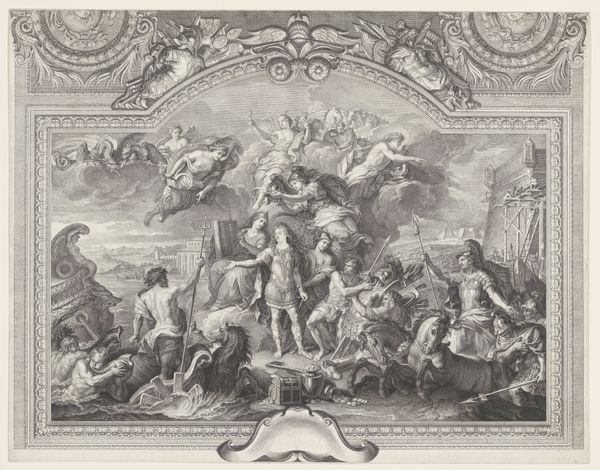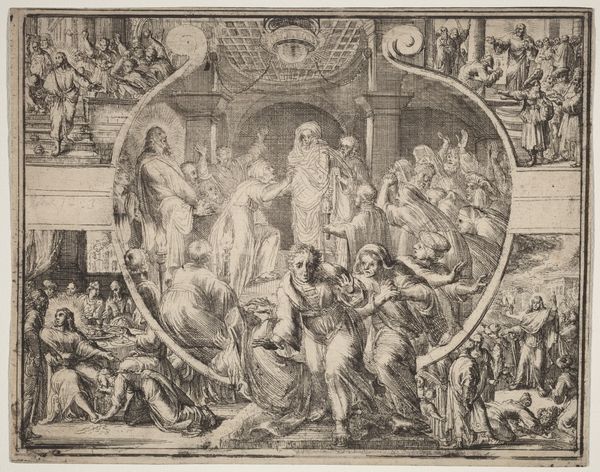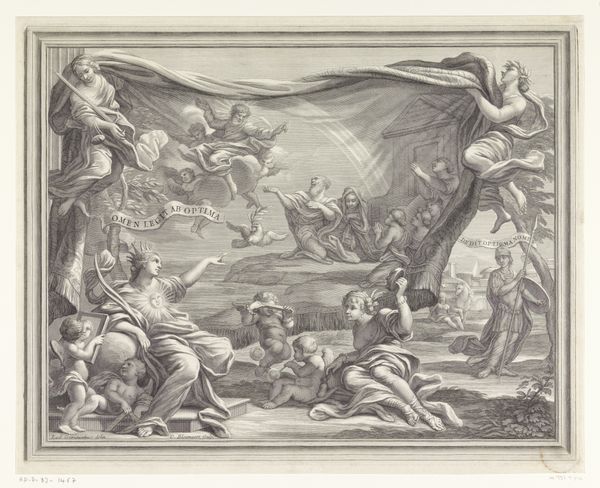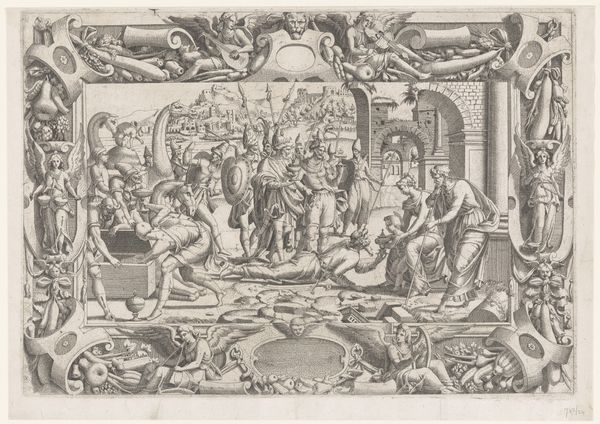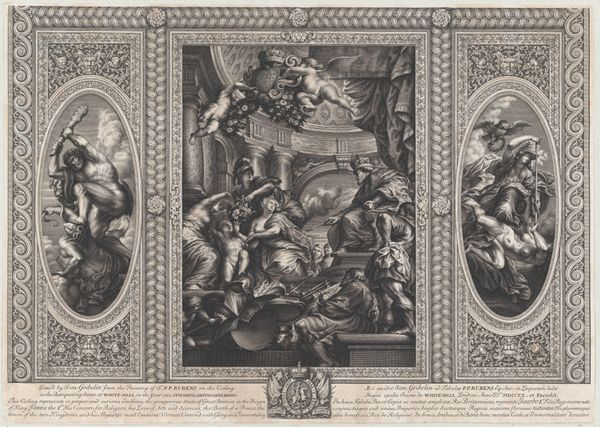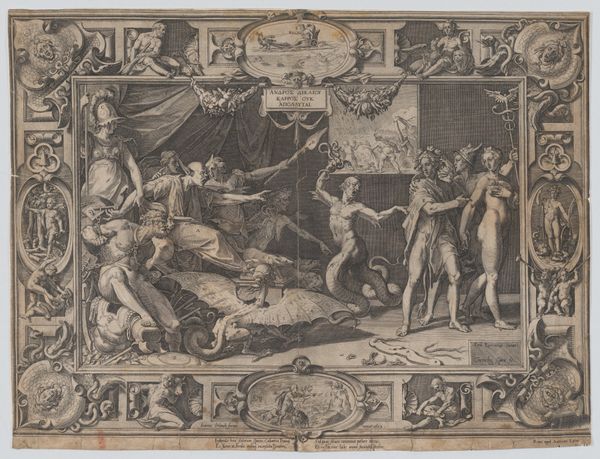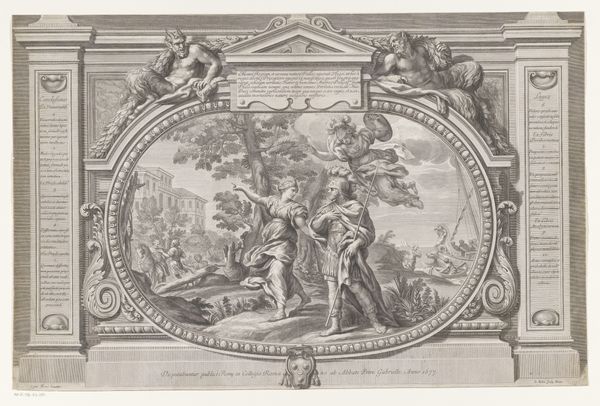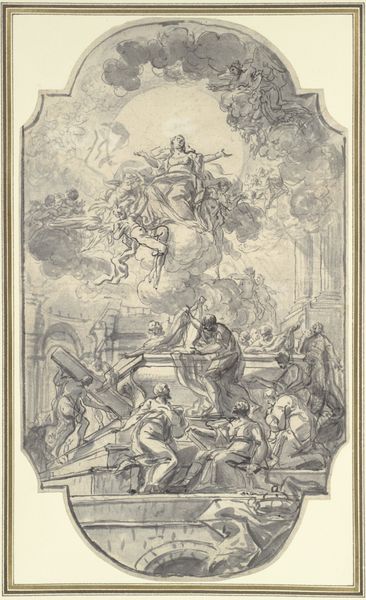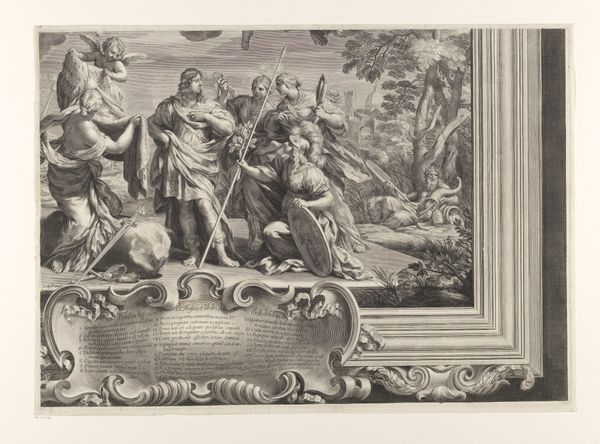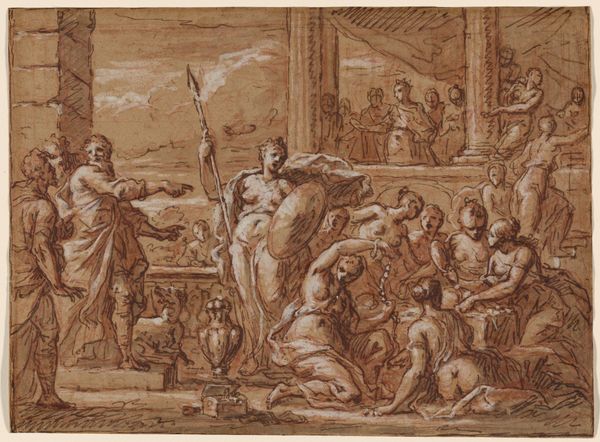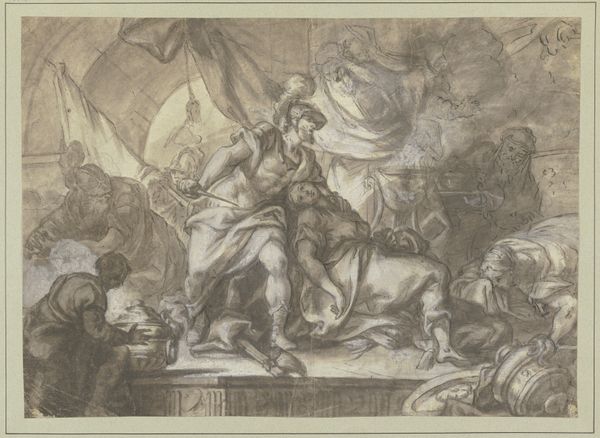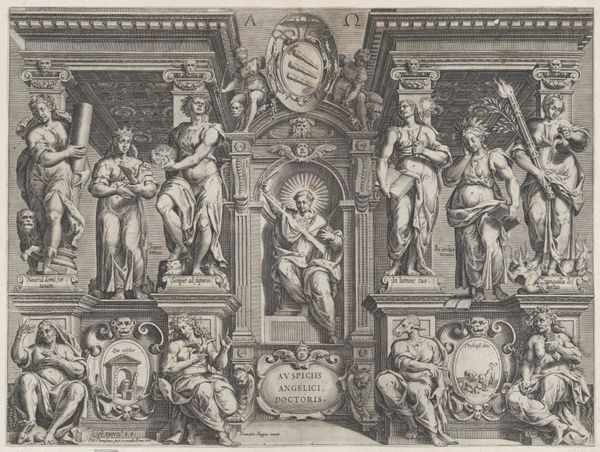
Annibale Carracci Introduces Painting to Apollo and Minerva 1674
0:00
0:00
drawing, print, engraving
#
drawing
#
allegory
#
baroque
# print
#
figuration
#
line
#
history-painting
#
engraving
Dimensions: Sheet (Trimmed to plate): 18 1/8 × 25 1/4 in. (46 × 64.1 cm)
Copyright: Public Domain
Editor: Here we have Pietro Aquila's engraving, "Annibale Carracci Introduces Painting to Apollo and Minerva," from 1674. It’s quite intricate. What do you see in this piece that we might miss at first glance? Curator: Well, on the surface it’s a classical allegory celebrating artistic skill. But let’s consider its role in a larger power dynamic. Ask yourself, who gets to define "skill," and whose stories are being elevated? This engraving acts as a form of cultural legitimization, embedding Carracci’s style—and by extension, certain artistic values—into a lineage of established authority via Apollo and Minerva. Editor: So it's not just about artistic talent, but about endorsing a specific, perhaps exclusive, definition of art? Curator: Precisely. Think about the social structures underpinning this. Who had access to the classical education necessary to even understand these allegorical figures? This print normalizes and reinforces that access and associated power, creating a hierarchy of taste and knowledge. How does this kind of endorsement affect marginalized artists, those who couldn't participate in these circles? Editor: That's a perspective I hadn't considered. The celebration of "high art" then has a darker side. It can inadvertently marginalize other forms of artistic expression by framing them as less sophisticated or less worthy. Curator: Exactly. Consider how concepts of artistic “genius” often overshadow the contributions of women or artists from underrepresented groups who worked outside these dominant narratives. It really forces us to challenge whose voices are amplified within art history. Editor: I see how digging beneath the surface helps reveal those underlying issues. Thanks! Curator: My pleasure. Hopefully, this conversation enables you to continue interrogating historical images critically, in the interest of understanding social contexts of artwork.
Comments
No comments
Be the first to comment and join the conversation on the ultimate creative platform.
